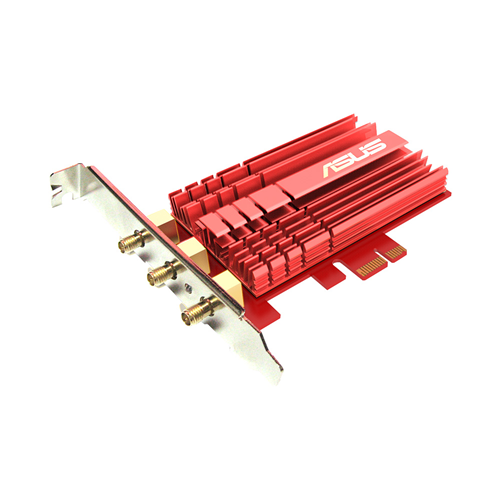

I frequently say that if you’re going to buy an AC1900 routers, you should buy two of them, since that’s the surest way to get a 600 Mbps link rate in 2.4 GHz.

Let’s start with the ASUS RT-AC68U.ĪSUS RT-AC68U 2.4 GHz downlink – PCE-AC66 vs. I then pulled each set of results into comparative plots, which revealed surprising results. Since router firmware had been updated, I didn’t want to just reuse the old test data. The Linksys EA6900 was the only router of the three that showed a 450 Mbps link rate.Īfter I ran the tests with the AC68 adapter, something told me that I should run the tests again, but with the PCE-AC66 adapter. Before starting the test run in each case, I checked that the PCE-AC68 did indeed link at 600 Mbps (or at least at rates above the 450 Mbps maximum link rate for non 256-QAM operation). I then ran 2.4 GHz up and downlink profiles with the rear of the router facing the test chamber antennas 8" away. But I already had done a lot of testing with 3.0.0.4.374_371, so wasn’t going to change.) I first upgraded each router to its latest released firmware, i.e.: So I went back and retested the three AC1900 routers’ 2.4 GHz performance using the PCE-AC68 and the new driver. That latter obstacle changed in mid-December, when ASUS released the 2.0.7.1 version of its driver/utility for the PCE-AC68. I also had not been able to switch to using the AC68 even if I wanted to, because ASUS had not released a driver that enabled 600 Mbps link rates. its AC1900 class replacement, the PCE-AC68. That’s why my testing has continued to use ASUS’ PCE-AC66 AC1750 class client, vs. My primary objection to AC1900 routers is that most clients can’t achieve the 2.4 GHz 600 Mbps link rates that are the main reason for this class’ existence.


 0 kommentar(er)
0 kommentar(er)
